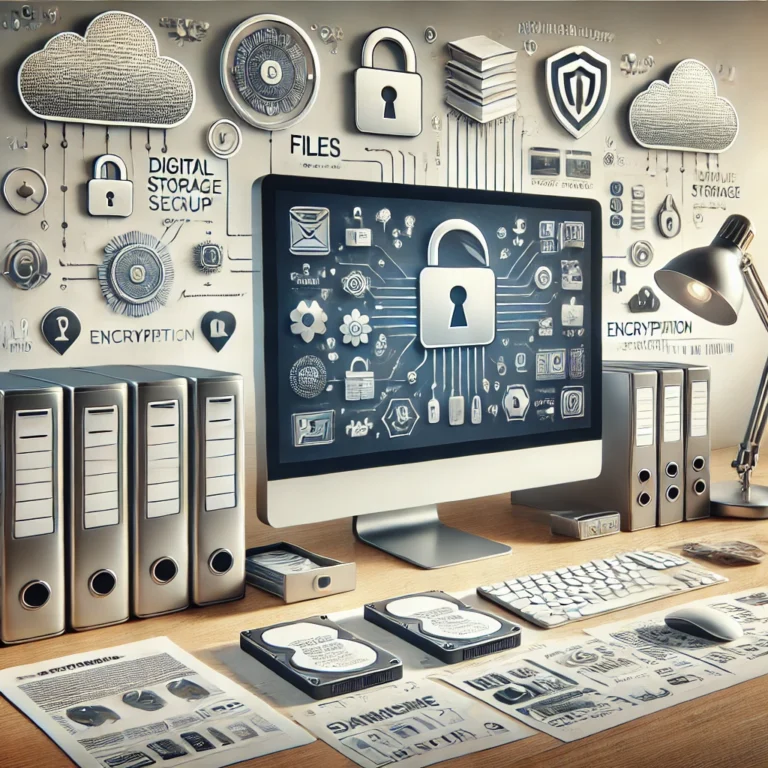In the digital age, where data storage and accessibility are paramount, Adamarchivesess.com is your comprehensive resource for understanding, implementing, and optimizing digital archiving techniques. This guide explores the essentials of digital archives, the importance of preservation, and best practices for safeguarding data over the long term. As individuals and organizations increasingly rely on digital records, implementing effective archiving solutions is more crucial than ever.
1. Understanding Digital Archiving and Its Importance
Digital archiving involves the preservation, management, and organization of data in a digital format. This process is essential for protecting historical information, business records, and personal data, ensuring they remain accessible and intact over time. In an era where technology evolves rapidly, having structured digital archives is critical: adamarchivesess.com.
Key Benefits of Digital Archiving
- Enhanced Accessibility: Digital archives make it easy to access and retrieve information from anywhere in the world. This ease of access supports research, historical preservation, and business continuity.
- Cost Efficiency: Storing information digitally is often more economical than maintaining extensive physical archives, as it reduces the need for physical storage space and allows for easy scalability.
- Data Integrity and Security: Through encryption, access control, and redundancy, digital archives provide advanced security measures that ensure data is protected from unauthorized access, accidental loss, and corruption.
Who Uses Digital Archives?
- Educational Institutions: Schools, libraries, and universities store research materials and historical records.
- Corporations: Businesses use digital archives for compliance, record-keeping, and intellectual property management.
- Individuals: Personal archives for documents, photographs, and multimedia ensure memories and personal records are safely preserved.
2. Essential Practices for Effective Digital Archiving
Digital archiving requires structured practices to ensure data remains usable and safe for years to come. Here are some of the core practices that enhance the efficiency and reliability of digital archives; adamarchivesess.com.
a) Data Backup and Redundancy
Implementing a robust backup strategy is essential for data preservation. Backup systems should include multiple copies stored across different media and locations to ensure redundancy: adamarchivesess.com.
- Primary Backup: The first backup copy should be made as soon as possible after data is created or updated.
- Secondary Backup: This copy should be stored in a separate physical or geographical location to protect against data loss from events like natural disasters.
- Regular Backup Schedules: Consistent and frequent backups keep archives current and reduce the risk of data gaps.
b) Metadata Management and Indexing
Metadata describes the characteristics of the data, such as creation date, author, and format, which facilitates easy retrieval and management: adamarchivesess.com.
- Detailed Metadata: Include essential information to accurately identify and retrieve data. Comprehensive metadata makes it easier for users to locate files efficiently.
- Consistent Indexing: Organize files with a logical indexing system that includes categories, tags, and keywords. This structured organization enables streamlined data search and retrieval.
c) Long-Term Format Selection
Choosing the right file formats is critical for long-term archiving. Use widely recognized, non-proprietary formats to ensure compatibility and prevent obsolescence: adamarchivesess.com.
- Preferred Formats: For text, PDF/A is widely used due to its stability and compatibility. Images should ideally be saved in TIFF or PNG formats, while audio files may use WAV, and video files, MP4.
- Format Migration: Over time, as technologies evolve, some file formats may become obsolete. Planning for regular format migration ensures data remains accessible.
3. Choosing the Right Digital Archiving Tools
Digital archiving tools range from basic storage solutions to comprehensive archiving systems designed to handle large volumes of data. Selecting the appropriate tools depends on factors like storage capacity, security, and ease of access: adamarchivesess.com.
a) Cloud Storage Solutions
Cloud-based storage offers flexibility and scalability for personal and business use. Major providers like Google Drive, Dropbox, and OneDrive offer user-friendly platforms, while more robust options like AWS and Microsoft Azure cater to large organizations with advanced security requirements.
- Advantages: Cloud storage is scalable, accessible, and often comes with integrated security features.
- Disadvantages: Long-term costs can add up, and data is subject to the provider’s policies and potential access limitations.
b) Dedicated Archiving Software
Archiving software such as Preservica, Archivematica, and DSpace offer specialized features tailored for preserving and managing digital archives. These platforms are widely used by libraries, museums, and educational institutions: adamarchivesess.com.
- Features: These tools support features like automated backups, format conversion, metadata management, and compliance with archiving standards.
- Considerations: Dedicated software solutions may require more significant investment in terms of costs and training.
c) Hybrid Solutions
Combining cloud storage with local backups provides a balanced approach to data archiving. Hybrid solutions offer flexibility and security, ensuring that data remains accessible even if one storage medium fails.
4. Implementing Data Security in Digital Archives
Security is a critical component of any digital archiving strategy. Protecting data from unauthorized access, corruption, and loss requires multiple security measures; adamarchivesess.com.
Encryption
Encrypting sensitive data ensures that only authorized users can access it. Advanced encryption standards (AES) and secure key management are essential for data integrity.
Access Control
Limit access to digital archives based on user roles to reduce the risk of unauthorized modifications or deletions. Employ multi-factor authentication (MFA) to add an extra layer of security.
Data Integrity Checks
Regular integrity checks verify that data remains unaltered. Techniques like checksums and hash verification can detect data corruption early, allowing for prompt action: adamarchivesess.com.
Redundancy and Disaster Recovery Plans
Establish redundancies and a disaster recovery plan to quickly restore data in case of cyberattacks, hardware failure, or natural disasters. Disaster recovery protocols should include predefined recovery points and procedures to minimize downtime.
5. Maintaining and Updating Digital Archives
Long-term digital archiving requires ongoing maintenance to ensure that the archives remain accessible and relevant over time: adamarchivesess.com.
Regular Audits
Periodic audits help identify outdated formats, inactive records, and potential risks. Audits provide an opportunity to ensure archives are compliant with relevant policies and standards.
Data Format Migration
As technology advances, certain file formats may become obsolete. Planning for regular data migration ensures that archived files remain usable and compatible with current software and hardware.
Hardware and Software Upgrades
Regularly upgrade hardware and software infrastructure to maintain performance, security, and compatibility. Consider implementing cloud-based solutions for seamless scalability and infrastructure management.
6. The Future of Digital Archiving
The future of digital archiving will likely see advancements in AI and machine learning, facilitating better organization, search capabilities, and data analysis. AI-driven tools can enhance metadata management by automating tasks and predicting the best ways to categorize and store data: adamarchivesess.com.
AI and Machine Learning in Archiving
- Enhanced Metadata: AI can auto-generate metadata, reducing the workload for archive managers.
- Improved Search Capabilities: Machine learning algorithms enable more accurate and relevant search results, allowing for efficient retrieval.
- Automated Format Conversion: AI tools can identify at-risk formats and suggest conversions to extend data accessibility.
Blockchain for Data Integrity
Blockchain technology, known for its immutability, can provide a secure and transparent framework for digital archiving. By using blockchain, archives can verify the authenticity and integrity of data over time, reducing the risk of tampering or data loss.
Digital archiving is a powerful tool that ensures Adamarchivesess.com and other valuable data sources remain accessible for future generations. By following best practices and implementing robust tools, individuals and organizations can safeguard their digital legacies effectively. As technology continues to evolve, so too will the methods for preserving and managing digital archives.




